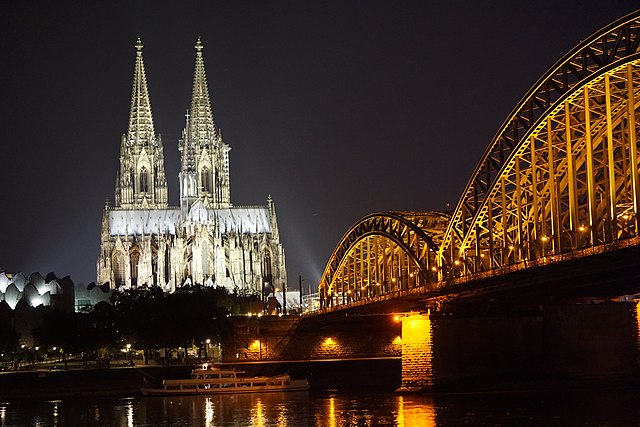Schumann composed his Third Symphony in six weeks in 1850, after moving to the Rhineland to take up the post of music director in Düsseldorf. This symphony, which he premiered in 1851, quickly became one of his most popular works and is a masterpiece of romanticism.
Its five-movement structure is unusual, although not unique (both Beethoven and Berlioz had previously written multi-movement “programmatic” symphonies). The title “Rhenish” was not given by Schumann himself, but rather by his publisher. However, Schumann rejected a program idea for this symphony, believing that the music should be heard without the artifice of titles coming between the listener and the music, and he even removed some initial movement titles before publication. Despite this, glimpses of Rhenish life and influence can be easily discerned, especially in the second and fourth movements.
Structurally, this symphony can be viewed as having three sections – two thematically connected movements at the beginning and at the end, which bookend a lyrical “song without words” middle movement. The main theme is based on the interval of a falling fourth (E-flat to B-flat) followed by a rising sixth and rising fourth. These harmonic relationships are the basis for many of the themes in the other movements. The first movement begins with a theme propelled by rhythmic displacement, vigorously driving the piece forward. It is interrupted by a rising scale motive in the strings, which then leads to a lyrical second theme played by the woodwinds. All three themes become prominent and intertwined in the section. A triumphant return of the main theme is heralded by the horns and then taken up by the full orchestra at the end.
The second movement Scherzo is based on a German “ländler” folksong; like the first movement, it opens with a rising fourth in the ‘cellos, bassoons, and violas. After several variations, the Scherzo segues into a trio featuring horns and woodwinds. It reaches a climax, before ending in a hushed restatement of the main theme by the ‘cellos and first bassoon. The third movement is a tranquil musical miniature, akin to a song without words. Opening with a flowing theme by the clarinets and violas, it features a four-note motif in the strings imitated by other sections in the orchestra, which Schumann combines in the ending section.
The stately fourth movement is a magnificent example of Schumann’s inventiveness. It is marked “Feierlich” (solemnly), in the somber key of E-flat minor. Opening with trombones, horns and bassoons, the main theme is again based on a rising fourth. Schumann develops the opening theme in a remarkable overlapping and contrapuntal style, punctuated by brass fanfares towards the end of the movement. The last movement, “Lebhaft” (lively), is brisk and light-hearted. The opening theme again based on a rising fourth, this time in scale form. Towards the end of the piece, the brass – after yet another set of fanfares – return to the fourth movement theme, now in an optimistic tone. Brass flourishes and a quick coda propel this symphony to its triumphant ending.
I. Lebhaft
II. Scherzo
III. Nicht Schnell
IV. Feierlich
V. Lebhaft
Symphony No. 3 in E-flat Major
Op. 97, "Rhenish"
Composed in 1850
By Robert Schumann






